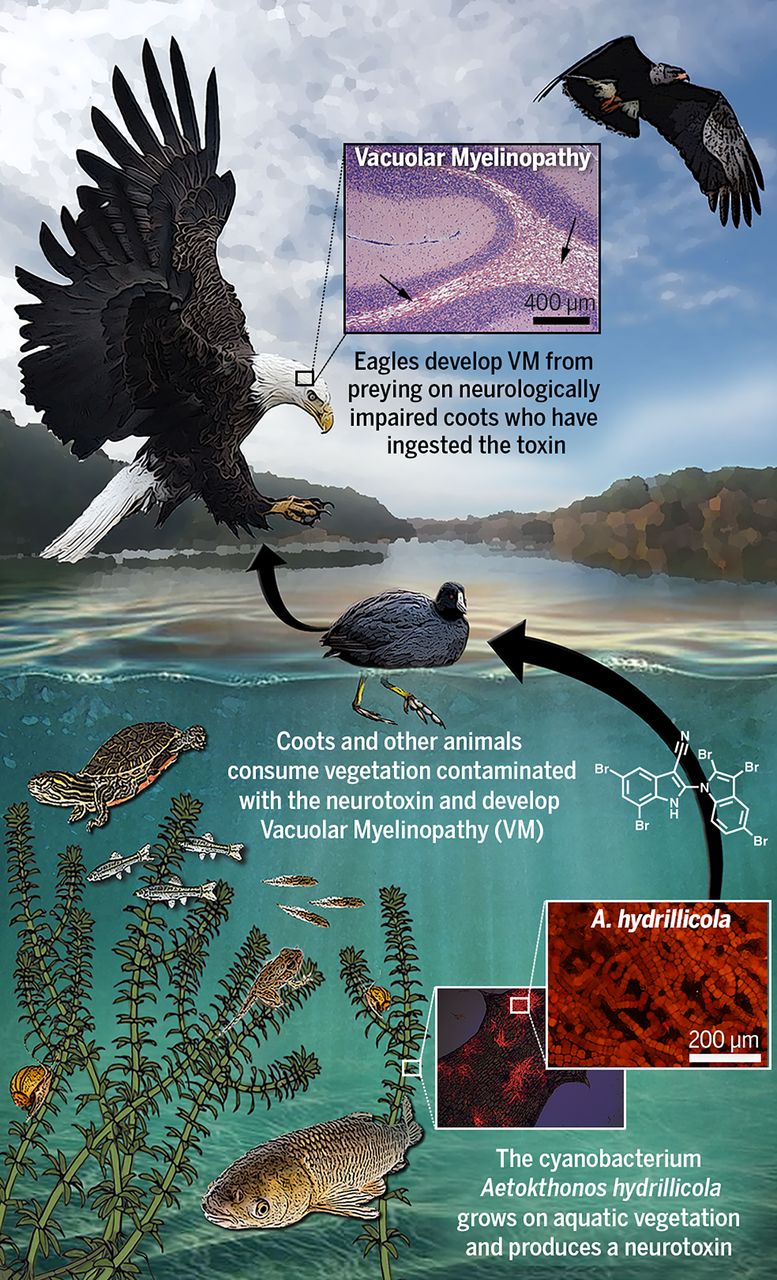
Hunting the eagle killer: A cyanobacterial neurotoxin causes vacuolar myelinopathy
S. Breinlinger; T.J. Phillips; B.N. Haram; J. Mareš; J.A. Martínez Yerena; P. Hrouzek; R. Sobotka; W.M. Henderson; P. Schmieder; S.M. Williams; J.D. Lauderdale; H.D. Wilde; W. Gerrin; A. Kust; J.W. Washington; C. Wagner; B. Geier; M. Liebeke; H. Enke; T.H.J. Niedermeyer; S.B. Wilde*
Science 371, eaax9050 (2021)
Vacuolar myelinopathy is a fatal neurological disease that was initially discovered during a mysterious mass mortality of bald eagles in Arkansas in the United States. The cause of this wildlife disease has eluded scientists for decades while its occurrence has continued to spread throughout freshwater reservoirs in the southeastern United States. Recent studies have demonstrated that vacuolar myelinopathy is induced by consumption of the epiphytic cyanobacterial species Aetokthonos hydrillicola growing on aquatic vegetation, primarily the invasive Hydrilla verticillata Here, we describe the identification, biosynthetic gene cluster, and biological activity of aetokthonotoxin, a pentabrominated biindole alkaloid that is produced by the cyanobacterium A. hydrillicola We identify this cyanobacterial neurotoxin as the causal agent of vacuolar myelinopathy and discuss environmental factors-especially bromide availability-that promote toxin production.
